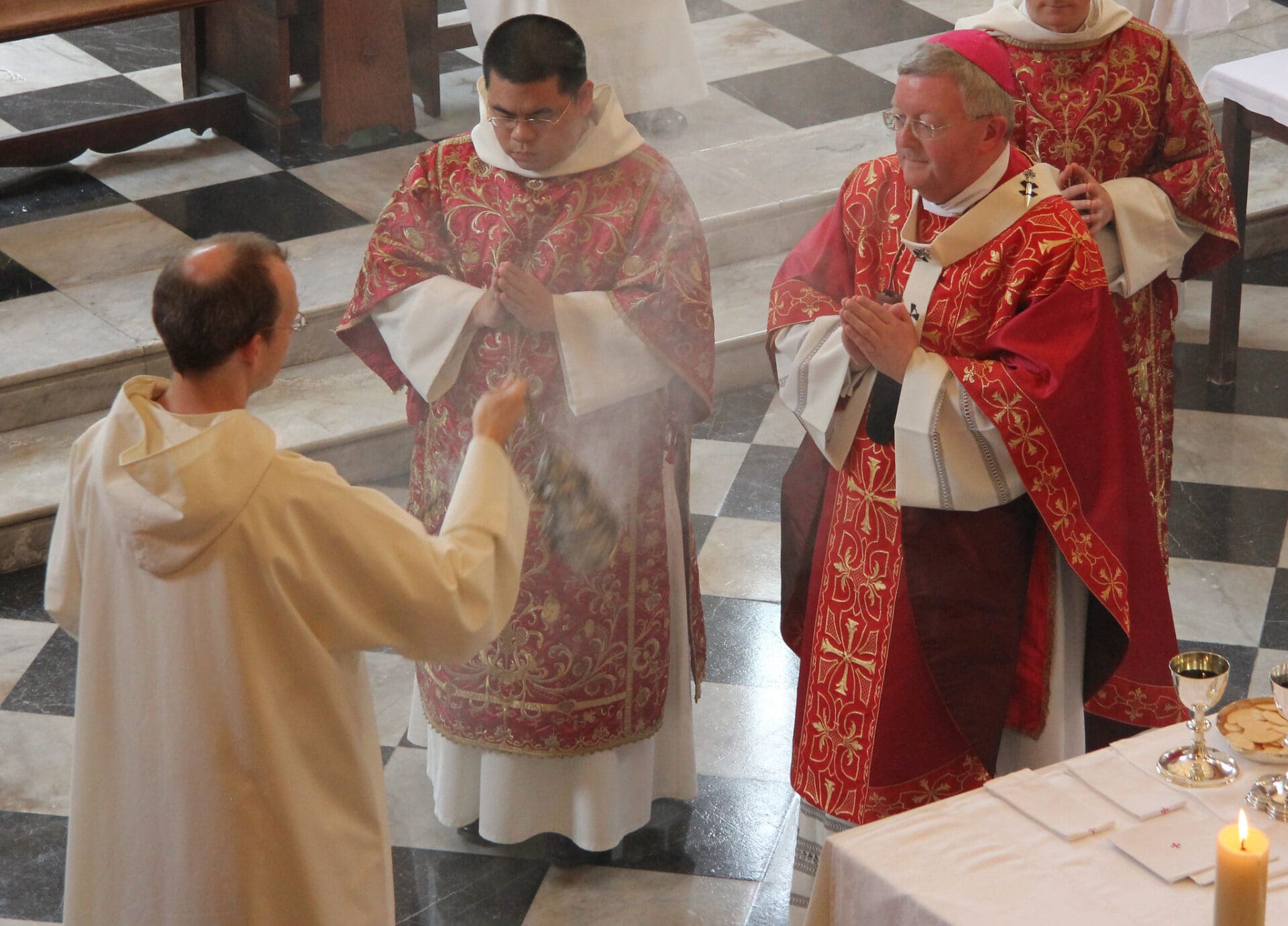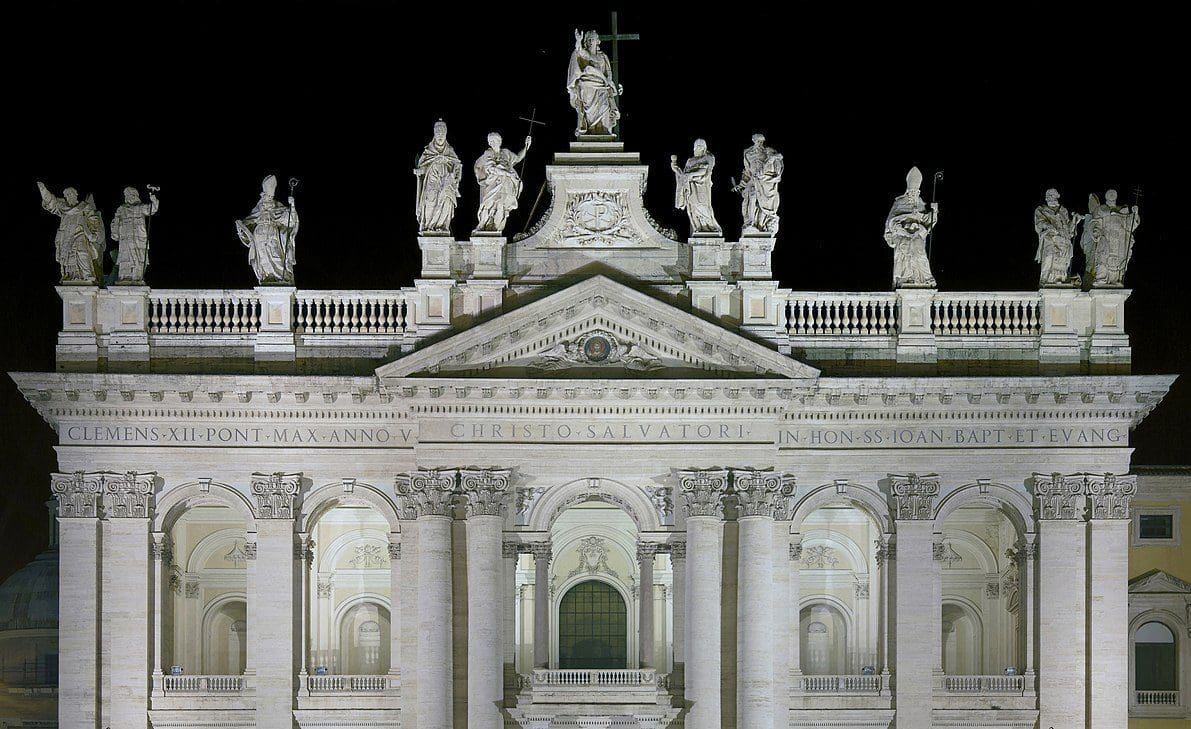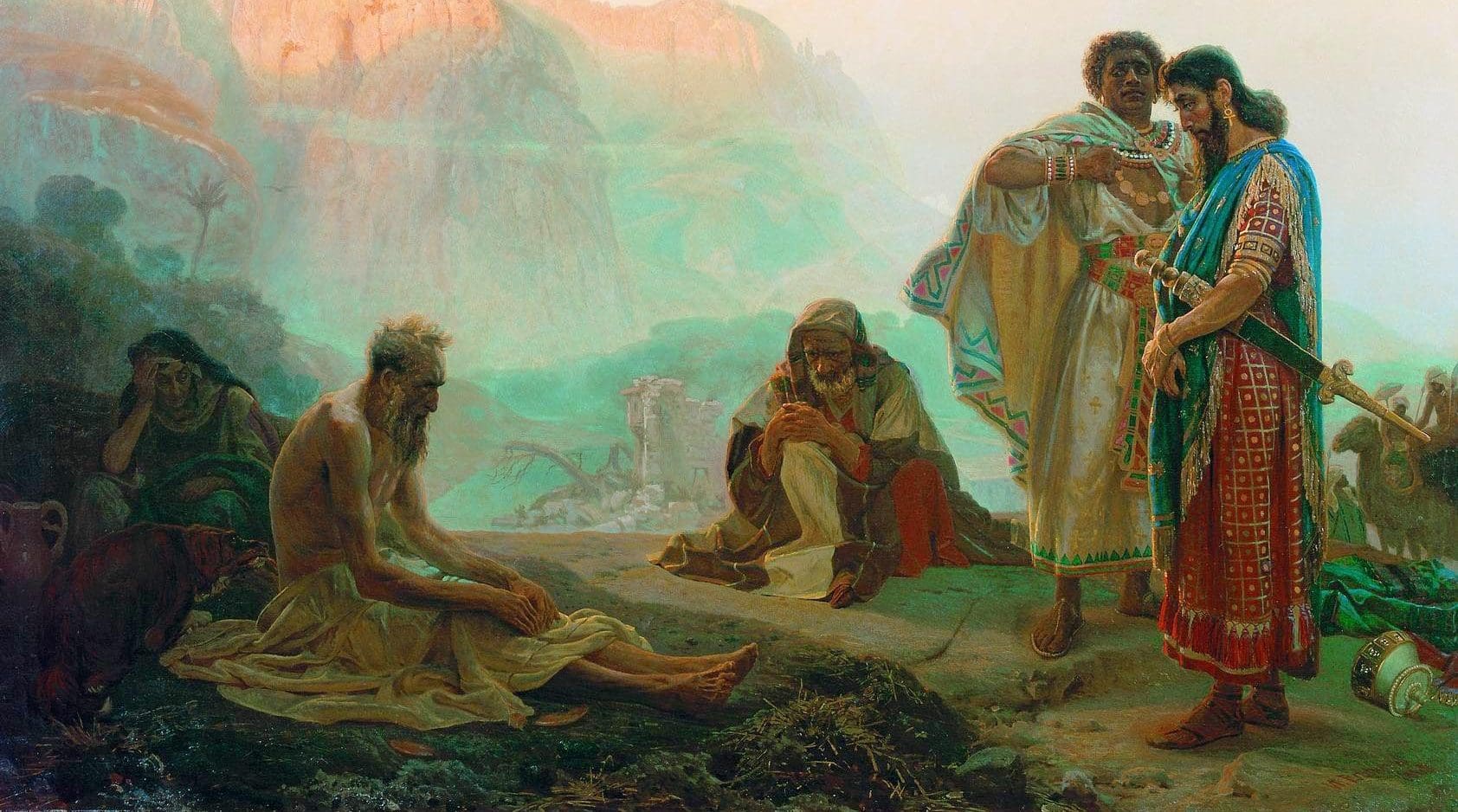While the Communion rite in the Ordinary Form is considerably simplified compared to the same rite in the Extraordinary Form, the traditional practice of the Roman rite can still provide celebrants with helpful directions about how to carry out the various gestures demanded by the preparation for Communion. This post will describe how those gestures might take place from the Our Father to the reception of Communion.
Our Father
With hands joined, the celebrant looks at the assembly and invites them to pray the Lord’s Prayer, saying, “At the Savior’s command and formed by divine teaching, we dare to say.” (If the celebrant is facing liturgical east, he has traditionally remained facing east during this invitation.) The celebrant then extends his hands in the orans position during the Our Father, and keeps his hands in that same position for the embolism to the Our Father, “Deliver us Lord we pray…,” bowing his head at the name of Jesus at the end of the prayer. Then the celebrant joins his hands for the doxology, “For the kingdom, the power, and the glory.” The deacon keeps his hands joined throughout. Concelebrants extend their hands in the orans position only during the recitation of the Our Father itself. They join their hands during the embolism to the Our Father and its acclamation.
Traditionally, the celebrant directs his gaze to the Host before him on the altar during the recitation of the Our Father. Unless a deacon, master of ceremonies, or another server is turning the pages of the missal for the celebrant, it might be more graceful for him to turn the page with his left hand just before he begins to recite the Our Father from memory, looking at the Host, so as to be able to continue immediately with the embolism which follows without lowering his hands to turn to the page. When singing the Our Father, the celebrant may look at the missal in order to follow the musical notation. In this case, after singing the Our Father, the celebrant will lower his right hand flat on the corporal before turning the page of the missal with his left hand.
Prayer for Peace
Having concluded the doxology, the celebrant begins the prayer for peace, “Lord Jesus Christ, who said to your apostles…,” holding his hands once again the orans position. Again, the traditional practice has been to look at the Host when praying this prayer, bowing the head slightly toward the Host. Standing erect and facing the assembly, he extends and joins his hands saying, “The peace of the Lord be with you always,” while looking at them. The deacon, with hands joined, invites all to share a sign of peace, turning to face them if necessary. (In the absence of a deacon, the celebrant similarly keeps his hands joined when facing the assembly and inviting them to share a sign of peace.) The celebrant himself then gives the peace to the deacon or to one of the ministers present (Order of Mass, 128), or to several ministers if he wishes (General Instruction of the Roman Missal (GIRM), 154). If concelebrants are present, the principal celebrant offers the peace to those concelebrants closest to him at the altar, before offering the peace to the deacon (GIRM, 239).
The Roman manner of giving the peace, like most elements of the ritual, is stylized (see Peter Elliott, Ceremonies of the Modern Roman Rite, Ignatius Press, 1995, p. 325). The person to receive the peace first bows to the person who is giving him the peace. For example, the deacon bows to the celebrant first. Both parties have their hands joined during this time. Then, the one giving the peace places both hands on the shoulders or forearms of the person receiving the peace. The one receiving the peace places his hands under the forearms of the person giving the peace. In the meantime, both parties bow their heads forward slightly, each bowing to the right of the other. Standing erect once again, both parties join their hands and bow to each other. The process is repeated as often as the peace is exchanged.
The Lamb of God
Then, while the Lamb of God is sung, the celebrant breaks the Host in two equal pieces using the thumb and index fingers of both hands. He breaks the Host along the line scored down the center of the Host, beginning at the top of the Host and concluding at the bottom. Arriving at the bottom of the portion held in his left hand, he breaks off a small particle of the host, and lays the larger portion down on the paten. Holding the chalice by the node with the fingers of his left hand, he holds his right hand with the particle over the chalice, and says the prayer, “May this mingling of the Body and Blood of our Lord Jesus Christ…,” in a low voice as he reverently drops the particle into the chalice (without making the sign of the cross). He then joins his hands before him to continue singing the Lamb of God with the assembly.
While the Lamb of God is sung, the concelebrants prepare for the reception of Holy Communion. Concelebrants genuflect whenever they approach the altar to receive either or both species. If the concelebrants remain standing at their places instead, the main celebrant or one or more of the concelebrants brings a paten or ciborium of Hosts consecrated at that Mass (not at any previous Mass) to each of the concelebrants (see GIRM, 242). Each concelebrant takes a Host with his index finger and thumb. He may hold his left hand open under his right hand if he will be holding the Host in his right hand for some time before consuming it, as when all the concelebrants consume at the same time (GIRM, 244). Concelebrants may also pass the paten or ciborium among themselves from one to another (GRIM, 242).
Prayer of Preparation for Communion
After the conclusion of the Lamb of God, the celebrant says one of the two prayers of preparation for Communion which follow, either “Lord Jesus Christ, Son of the living God…” or “May the receiving of your Body and Blood, Lord Jesus Christ…,” with hands joined. Traditionally, these prayers were said bowing slightly to the consecrated elements, with hands joined, the third fingers of the hand resting on top of the altar, and the fourth and fifth fingers of each hand touching the edge of the altar. In the United States, the faithful are directed to kneel at the conclusion of the Lamb of God, unless the diocesan bishop decides otherwise. Number 43 of the Latin edition of GIRM says that this custom should be “laudably retained.” Thus, it would seem that in those places where the faithful kneel at the conclusion of the Lamb of God, the deacon too may kneel at this point, provided he will receive Communion. Historically, the deacon remained standing after the Lamb of God only when he was not receiving Communion.
Reception of Communion
Having concluded the prayer of preparation in a low voice, the celebrant genuflects, resting both hands flat on the corporal, rises, and takes up a portion of the Host in the right hand and the paten or chalice in his left hand. He holds the elements at eye level, and looks at the assembly, turning around if necessary, as he addresses them, “Behold the Lamb of God….” With the assembly, he says, “Lord I am not worthy…,” while looking at the elements. Then turning back to the altar if necessary, placing the paten or chalice in his left hand down on the altar, he reverently consumes the portion of the Host in his right hand, bowing slightly to do so, his left hand resting on the corporal.
Standing erect, he joins his hands before his face as he reverently consumes the Body of the Lord. Without delay, the celebrant then takes the chalice in his right hand, holding in his left hand either a purificator or a scale paten (already purified by his right thumb) under his chin, and reverently consumes the Precious Blood. The celebrant then turns on his right and ministers the Body of the Lord to the deacon, followed immediately by the Blood of the Lord from either the principal chalice or any auxiliary chalice (GIRM, 244).
If the celebrant intends to consume the entire contents of the principal chalice himself, he does so in one draught without raising the chalice high. The celebrant transfers the purificator from his left hand to his right hand, wipes the rim of the chalice with the purificator in his right hand, holding the chalice at the node with the fingers of his left hand. He covers the chalice with the pall in his right hand, while touching the base of the chalice with the fingers of his left hand.
When receiving the Precious Blood at the altar, each concelebrant genuflects and then takes the chalice by the node in his right hand, holding a purificator under his chin in his left hand (Rite of Concelebration, 1965, 52). After consuming some of the Precious Blood, he puts the chalice down on the corporal. He transfers the purificator from his left hand to his right hand and wipes the rim of the chalice with the right hand, the fingers of the left hand holding the node of the chalice. Alternatively, concelebrants may be handed a chalice by the deacon or one of the concelebrants, or the chalice may even be passed from one to the other (GIRM, 246).
Distribution of Communion
After the communion of the celebrant, the deacon, and the ministers, the distribution of Holy Communion to the assembly begins. The communion of the concelebrants may continue during this time if necessary. Here, too, the traditional practice of the Roman Rite can be very helpful in creating an orderly and reverent manner for the distribution of Holy Communion.
In the next post, this series will examine those gestures, and those associated with the reposition of the Blessed Sacrament which remains, and the purification of the vessels.



